Gyoza, or Japanese potstickers, are not normally served with chocolate fudge sauce, but ice cream gyoza are!
Here’s how to make your own cookie dough and ice cream dessert gyoza.




Gyoza, or Japanese potstickers, are not normally served with chocolate fudge sauce, but ice cream gyoza are!
Here’s how to make your own cookie dough and ice cream dessert gyoza.
Sichuan peppercorns, oh yeah! Raven of Made with Molecules after eating them wrote, “There’s a war in my mouth.” They create a riot of numbing and tingling sensations, particularly if you can get relatively fresh ones (i.e. not stale from sitting around in a Whole Foods bulk bin). Raven links to an abstract about the particular anesthetic-sensitive potassium channels inhibited by hydroxy-alpha-sanshool, one of the components of sichuan peppercorns that make them so exciting.
Science aside, we recently found some in a local asian grocery store, and were particularly struck by the packaging. American packaging often has annoying disclaimers about how contents are packed by weight and may have settled. These peppercorns were not only weighed, but the precision of the scale is indicated! If only all packaging was so straightforward. I was going to complain that the package doesn’t say what kind of peppercorns were inside (sichuan peppercorns are not related to other peppercorns) but then realized that the Chinese characters are specific to these “flower peppers” even if the English words are more general. In any case, the reddish husks are recognizable through the bag.
Happy birthday to us! Evil Mad Scientist Laboratories is now three years old.
To celebrate, we’re rounding up our most interesting projects from this past year.
Quick projects and observations:

The monetary density of things
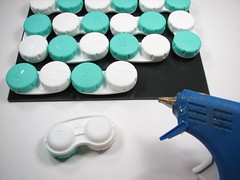
Contact Lens Case Small Parts Tray
Simple LED Projects:
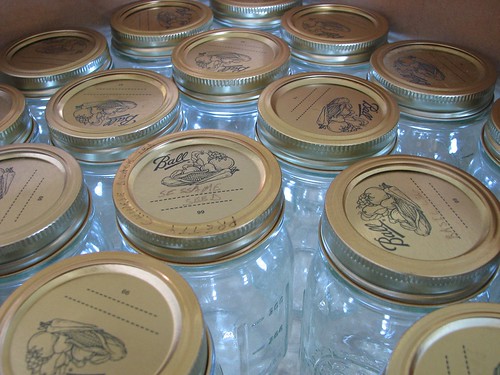
Quick, easy, temporary, and beautiful LED garden lights
Food Hacking:

South Indian Restaurant Menu Decoder
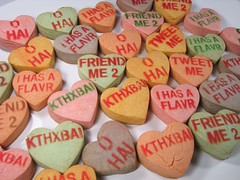
Improved Custom Message Hearts
CandyFab
Papercraft
Electronics Projects
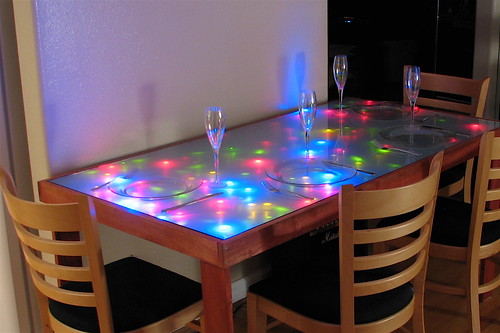
Interactive LED Dining Table Circuit

Dark detecting jack-o’-lantern
Kit Projects
Crafty Projects
Microcontroller Projects

Tennis for Two, a video game from 1958
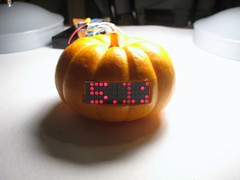
Scariest Jack-o’-Lantern of 2008
Geek Design
(Whew!)
The influence of the Slow Food movement is increasing, and gardening is getting ever more popular. Even the tech bloggers are posting about local pollinators and getting beehives. In this environment, it is fitting that a new use has been found for our Now Slower and with More Bugs stickers, which were first seen in the wild back in December 2007. If you find a good use for them, we’d love to see pictures in the flickr auxiliary!
(Thanks, Lorien!)
Photos by Lorien Tersey
The Koch Snowflake is a neat fractal shape… that you can make in your kitchen.
For years, we’ve enjoyed eating out at South Indian restaurants– they often have exceptionally interesting food. They are almost invariably vegetarian, so it is generally safe– even for non-carnivores –to order anything off of the menu.
But here’s the rub: the menus tend to be terse. Many of them have only a list of items, without description at all (Tirupathi Bhimas has an excellent example). It’s not clear if this is because they don’t expect “outsiders” to want this kind of food, or perhaps some other reason, but restaurants with clear descriptions of the menu items are the exception, not the rule.
Moreover, the waiters aren’t always trained to give explanations to non-Indians. If you ask what the difference between a dosa and a rava dosa is, you might hear that rava dosas are crispier. But your waiter may not know that rava means wheat or be able explain that in a rava dosa semolina replaces the rice flour. And that won’t help you if you don’t already know that a dosa is a large crispy crepe made with a fermented batter of rice flour and ground lentils. The semolina in a rava dosa does make it crispier, and a little thicker than a regular dosa. It also takes a little longer to cook, so you can expect it to come out of the kitchen a bit later than a regular dosa.
That little bit of trivia may stick in your mind for a short while, but will you remember it the next time you are at the restaurant? (Will we?) And what if you can’t remember what uthappam is? Some restaurants include more information on their website than they do on their printed menu (Saravanaa Bhavan [pdf] and Udupi Palace are good examples) but it would be a hassle and require planning to print out their online menu to take with you.
So you need a decoder ring! Or at least a wallet card. With a little help from Wikipedia (check out their page on curry!) and the glossary in my copy of 1000 Indian Recipes, we’ve put together a South Indian Restaurant Menu Decoder Wallet Card (800 kB PDF) for your enjoyment, education, and dining pleasure. You can print it out– single sided so no hassle –and it compresses to standard business card size: 3.5″ x 2″. You can also not print it out, and just view it on your iPhone. (And if you’ve never been to a South Indian place, isn’t this a good time to try one?)
A note on spelling and vocabulary: India is big. Many ingredients and dishes have different names in different regions, languages and dialects. Spellings vary a lot. I have used some of the more common variants, and tried to use multiple versions where the variance seems significant to me. I used versions that I have seen on menus in my area. I have not included all of them. If it sounds similar, it probably is.
A note on my definitions: I tried to include enough information to be useful, not so much as to be tediously accurate. My translations are gleaned from lots of sources, including my own experience and experimentation. Space considerations for the wallet card have led to some compromise on absolute accuracy. But I’m not Indian or I wouldn’t be writing this, so if you see something that’s blatantly wrong, please let me know.
We’d love to see wallet decoder cards for other kinds of restaurants, so let us know if you make one! Korean? Pakistani? Where else do we need one?
In some ways, we really like candy message hearts. They make good ammo, you can stamp them with your own messages, they make halfway decent sidewalk chalk, and they do bizarre things if you cook them.
On the other hand, you may or may not like the way that these things taste. (To us, many years ago, they compared very favorably to the other varieties of sidewalk chalk that we had tried.) In either case there is certainly some room for culinary alternatives.
Read on and learn how to make your own highly edible custom cookie message hearts.
With a little help from a square springform pan, you too can have an Apple apple pie for dessert!
Continue reading Now that’s an Apple Pie!
I am this many.
Have you ever heard of the unary number system, i.e., base-1 numerals? That’s the formal designation of tally marks– a means of representing a number symbolically by using symbols, where the number represented is equal to the number of symbols. While easy to grasp, it’s also a rather inefficient system, so we don’t find too many uses of them in modern life. One of the places that we do (almost) always use the unary system is on birthday cakes, where a birthday cake has one candle per year. This is fine for small numbers, but positioning, lighting and blowing out candles becomes impractical past a certain point.
Here’s a better way: A binary birthday candle. It consists of a single candle with seven wicks, where the wicks that are lit represent the birthday individual’s age in binary. This single candle design works flawlessly to represent any age from 1 to 127, never requiring anyone below the age of 127 to blow out more than a mere six candles at a time.
Continue reading Binary Birthday